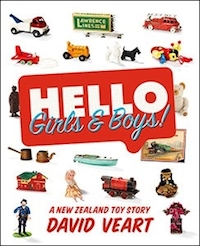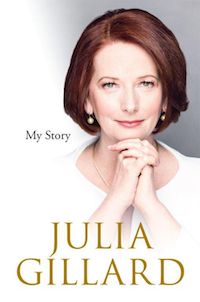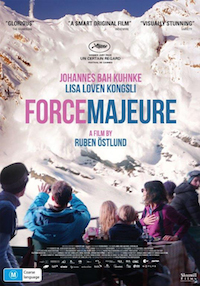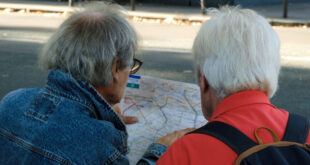Sometimes a thought provoking book or movie can be just what you need in summer. Here are some we enjoyed recently.
 Hello Girls and Boys! A New Zealand Toy Story
Hello Girls and Boys! A New Zealand Toy Story
This is a fascinating history of toys and games in New Zealand. As you leaf through and look at the illustrations it will bring back the memories!
My partner John fondly remembered his Jiffie Joiner and Meccano set. And the many times he inadvertently sent a cricket ball crashing through one of the windows at the family home. His toys were given away long ago, except for a Hornby Train set which, packed up in a cardboard box, has not seen the light of day for several decades.
Hello Girls and Boys! A New Zealand Toy Story starts from the time when the first waka arrived. They carried kites which had been used to harness the wind. Maori also played other games such as knuckle bones, string games, spinning tops, puppets and stilts and a Maori form of knucklebones called koruru.
The early settlers brought a few toys with them. Once here only a few wealthy people could afford classy imported German toys like toy musical instruments and mechanical toys. Poorer people made their own fun.
Anyone who has romantic notions that in the good old times children behaved themselves will have their illusions shattered when they read the chapter about wild colonial children. Armed with shanghais they slaughtered countless birds, broke windows and terrorized people.
In 1936 the Evening Post reported that shanghai wielding children smashed 7000 of the insulators around power poles in Wellington and there was a call to ban the sale of elastic to children by concerned citizens. Our toy history was shaped by our social, political and economic environment. The early 20th century was a time of economic growth so people could now afford to buy imported German toys. But these were no longer wanted once WW1 started.
After the war British made Meccano sets and Hornby trains became very popular. In 1927 the largest Meccano club in the world was in Auckland with over 1000 members. A total ban was placed on imported toys during the Depression which encouraged the growth of New Zealand brands such as Fun Ho, Torro and Lincoln toys.
But Rogernomics spelt the death knell for much of the local toy industry as our market was flooded with the latest trendy and affordable Asian imports. Only Fun Ho survived.
Throughout our history boys have made their own toys, boats, trolleys and weapons from recycled and found materials. David Veart, the author was no exception. For his first skateboard he nailed a skate to a plank from a fruit box .It did not get along with the metalled road where he lived and he still has the scars to prove it.
Today kids and adults have access to thousands of computer games. Some traditional games are also still coming on the market such as jigsaws, toy soldiers, model aircrafts, dolls houses and train sets as well as some versions of Barbie.
But guess who is buying these? It’s often grownups who are rediscovering the pleasures of playing with toys from their childhood. Toys are not just for kids!
I think this book is a gem. David Veart is a great story teller and he has researched his subject well.
Title: Hello Girls and Boys! A New Zealand Toy Story Author: David Veart. Publisher: Auckland University Press. $65
 My Story by Julia Gillard
My Story by Julia Gillard
In My Story Julia Gillard, Australia’s first and only female Prime Minister tells the story of her three turbulent years in office.
In part one: How I did it she takes us behind the scenes and reveals what really happened in the Labour Party when she deposed Kevin Rudd and how he continued to undermine her.
While she was Prime Minister she was subjected to a barrage of cruel sexist attacks by other politicians and the media which she endured with great resilience. They couldn’t handle the fact that she was unmarried, childless and an atheist.
In the second part: Why I did It, she attributes her successes to her strong sense of purpose and having a clear vision of what she wanted to achieve.
Under her leadership the minority government (a coalition of Labour, Independents and Greens) passed a large amount of legislation in areas such as health, education and telecommunications. Here I got bogged down in the details at times and wished she could have been more succinct.
It hurt Gillard that she was portrayed as unfeeling in the media. Her compassionate side shines through in the chapter on Caring for Each Other.
It grew out of her upbringing as a child of two hardworking Welsh Immigrants. Her Mother was a cook at a Salvation Army Eventide home for elderly women and Julia often went to her work after school and mixed with the residents. Her father worked in a hospital with mentally ill patients.
This made her sensitive to wanting the best for people with disabilities and old people who can no longer care for themselves and led to ground-breaking legislation in these areas.
There were some mistakes. She regrets that her government did not handle the refugee and asylum seeker policy better. She also admits she should not have used the term carbon tax in 2010 when what she really meant was to put a price on carbon and not to create a new tax. Influenced by a conservative family upbringing her position against gay marriage was also out of sync with the times.
Gillard had many opportunities to meet world leaders and tells a few amusing anecdotes. President Obama teased her about frizzy hair and British Prime Minister David Cameron mimicked her Australian accent. Despite their political differences she had a great deal of respect for John Key and formed a personal friendship with his family.
She feels that although she had a rough ride it will get better for the generations of women leaders who come after her. But that will she writes “require women and men in all sections of Australian life to, day by day, point out sexism when they see it and change it.”
I think of our granddaughters. Like Julia and her sister they are being brought up to imagine girls can do anything. But statistics show that in New Zealand also there are still far too few women on boards and in other leadership roles. The halcyon year (2001) when all the constitutional roles – Head of State, Governor –General, Prime Minister, and Leader of the Opposition, Attorney General and Chief Justice were held by women has not come again. Will their generation be strong enough to break through the glass ceiling which still exists?
Title: My Story Author: Julia Gillard. Publisher Random house. RRP $54.99
 Force Majeure
Force Majeure
In this movie a Swedish family is on a skiing holiday in the French Alps. They are enjoying their lunch out on the deck of a mountainside restaurant with a magnificent view of the snowy peaks when suddenly an avalanche hurtles towards them.
In the ensuing chaos Tomas, the father panics, picks up his iPhone and runs for his life leaving his wife and children to fend for themselves.
Fortunately the danger passes them by. But although physically safe the marriage is now is in serious trouble. Tomas is a workaholic who has been spending too little time at home. This holiday was supposed to be a time to reconnect with his children and to have some quality family time.
But because he bolted and made no effort to protect his family, he has fallen far short of his wife Ebba’s expectations. What makes it worse is that he denies that’s what he did and refuses to apologise. Whether the rift can be healed is explored as this family drama unfolds.
It was an interesting well-crafted movie and a winner at the Cannes Film Festival Afterwards my partner John and I had a difference of opinion.
He argued that Tomas acted instinctively to preserve his own life and that because it was instinctive behaviour he should be judged less harshly.
I think that in an emergency any parent (of either gender) would always instinctively put their children first.
Could this be a case of women are from Venus and men are from Mars?
Force Majeure (distributed by Rialto) will be in cinemas from January 22.









Join the Discussion
Type out your comment here:
You must be logged in to post a comment.